#and then there’s ambivalence. then there’s ‘well written but i hate them’ and ‘george what are you doing’
Text
I think my tiers go like
god tier faves (i don’t follow people who don’t like them)
Bran, Catelyn, Sansa
i am the [character] understander (faves)
Ned, Brienne, Jeyne Westerling, Doran, Oberyn, Theon, Elia, Bobby B., Lyanna; Rhaenyra, Viserys I, Gaemon Palehair, Sylvenna Sand, Lady Essie, Visenya, Alyssa Velaryon, Addam Velaryon, Nymeria of Ny Sar
besties tier (i love them)
Arya, Jon, Joffrey, Jaime, Arianne, Quentyn, Davos, Melisandre; Dunk, Aegon V, Aegon II, Aegon III, Baela, Rhaena of Pentos, Deria Nymeros Martell, Naerys
the babes (i’m invested but not crazy)
Maester Aemon, Sam, Gilly, Mance, Pyp, Grenn, Ed, Cotter Pyke (just the whole Night’s Watch sans Jeor, fuck that dude), Asha, Loras, Garlan, Willas, Ellaria Sand, Sarella Sand, Osha, Jeyne Poole, Gendry, Podrick; Bethany Bracken
current brain worms bc i’m reading about them rn
Aeron Greyjoy, Daemon Targaryen, Arys Oakheart, Tyland Lannister, Dany, Elaena, Daena, The Red Princes, Minisa Whent, Daeron II, Maekar, Melly Blackwood
#this is always subject to change btw#getting on my soap box#i don’t think i’m forgetting anyone#straight up forgot jon for a minute there tho wksjdjd#too many fucking characters#there’s like a fourth tier where i like them but don’t expend much energy for them#and then there’s ambivalence. then there’s ‘well written but i hate them’ and ‘george what are you doing’
6 notes
·
View notes
Text
Anonymous asked: Have you watched Lupin? What did you think? (And are you a fan of the books or other adaptations of the character?)
The short answer is yes, I have seen Lupin on Netflix. Overall I enjoyed it so long as I suspended my disbelief at certain things.
Unfortunately it took being struck down by Covid and being bedridden for me to actually to binge watch the whole series. So I was behind the curve when my friends, French and those outside of France, started to talk about it around me. I had to beg them not to give away spoilers until I had seen it all.
It did surprise me that it won rave widespread reviews outside France because usually French drama series don’t travel very well outside of France. I’m sure even Netflix had no idea how successful it would be for them. I’m sure being in Covid lockdown had something to do with it. In any case I don’t begrudge its success as it’s well earned.
However I wasn’t too surprised that within France itself the French reviews were decidely mixed and divisive. The critic at Le Point painfully hit the nail on the head when he wrote, “Le plus gros défaut de l'ensemble reste la pauvreté des personnages, tous unidimensionnels, caricaturaux et aussi épais que du papier à cigarette.“ - loosely translated as, ‘the biggest flaw of the whole thing remains the poverty of the characters, all one-dimensional, cartoonish and as thick as cigarette paper’.
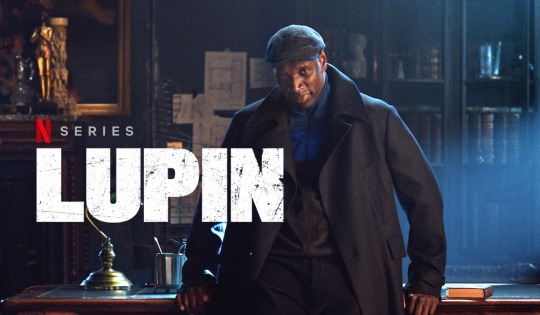
There’s a growing amount of good French stuff on TV and streaming services but a non-French audience will not have had the chance to have seen all of it yet. I can think of any number of French television drama/dramedy/cmedy series that are much better than Lupin with better plots, characters, and even a truer perspective of French society and even modern day France (Dix pour cent (Call My Agent!), Le Bureau des Légendes, Engrenages, Baron Noir, and Paris Police 1900). But you would be hard pressed to find anything that comes close to Lupin just for the sake of something fun to watch during the Covid lockdown.
What makes the current generation of home made French television series so interesting is how much of it is a reflection of France’s own anxieities about itself and its role in a increasingly English speaking dominating world. In a funny way it sees itself as defiant plucky Asterix fighting off the Roman American cultural hordes from totally invading their Francophone culture.
For sure, it has societal and racial issues stemming from its colonial legacy and issues of immigration and integration (France has the largest Muslim population in Europe). However it seems to want to ‘resolve’ these issues through the almost sacramental adherence to French secularist ideals rather than American inspired ideas of social justice and equity. There’s always been something very admirable about the French - from the time of General de Gaulle and perhaps before - always swinging from snooty ambivalence to outright antipathy towards the influence of American culture ‘americanising’ French culture (no to Walmarts or fast food chains for example).
Is it any wonder then that Netflix’s ill-conceived American series ‘Emily in Paris’ was widely hated and mocked within France for just perpetuating those lazy American tropes of Paris and French culture?
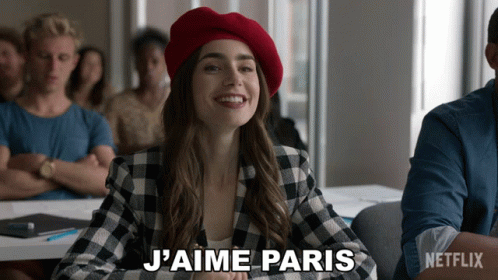
Personally I know Francophile Americans, long resident in Paris, who were frankly embarrassed and spent a lot of time apologising to their French friends. I have one American friend who has told me that she was so mad that she would have blind folded Emily and shoved her hard in the car boot and drive her all the way to the poorest of the banlieues in the grimey crime saturated suburbs of Paris - Seine-Saint-Denis came to mind - and dump her preening arse there. She would slap her and tell the spoilt entitied brat to make her own way back home - you know, to her spacious apartment in one of the most expensive arrondissements of Paris that of course(!) any American intern working for French marketing firms can afford.
I digress. My apologies. Watching this God awful show gives me PTSD.
Onto Lupin.
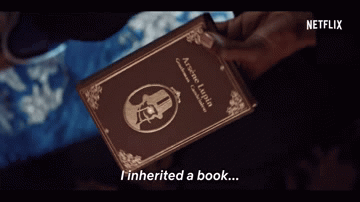
Thankfully Lupin doesn’t try to play to non-French tropes of what Paris is or isn’t. It does skim the surface of current discontents within French culture and society (race, class, power, and money) but ever so lightly so as to not get in the way of just spinning a good crowd pleasing yarn. It invites you to have fun and not to think too much. I have to be honest and say I enjoyed it as long as I suspended my disbelief here and there.
Lupin refers of course to the character Arsène Lupin, the French gentleman thief who stole jewellery from Parisian haute bourgeois and aristocracy at the turn of the century. Lupin, as written in the novels and short stories by Maurice Leblanc between 1905 and his death in 1941, was the archetypical anti-hero, a Robin Hood who stole from those who deserved it but kept the loot himself. He was often portrayed often a force for good, while operating on the wrong side of the law.
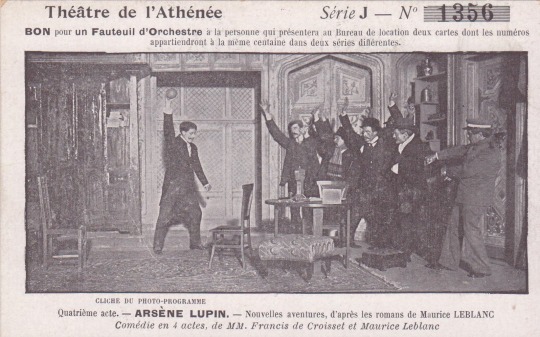
Lupin never really made much of an impact outside of France as he had within France where is revered with many French film and television adaptations. In England, we already had a Lupin type character in the form of A.J. Raffles, a cricket playing gentleman thief with his aristocratic side kick, Bunny. E.W. Horning’s stories of Raffles’ daring heists proved to be quite popular with the British public when Raffles first appeared on the scene in 1898. And even later Leslie Charteris’ The Saint took over the mantle from Raffles as the gentleman thief/adventuring Robin Hood.
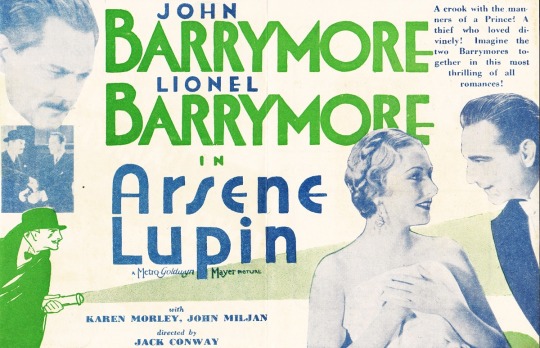
I think Hollywood tried to introduce him to an English speaking audience (legendary actor John Barrymore even played him) but he didn’t really take off and eventually they found their gentleman thief archetype in Sir Charles Lytton aka The Phantom (played by David Niven and Christopher Plummer) in the Pink Panther movies. So Lupin never got the English audience he deserved.
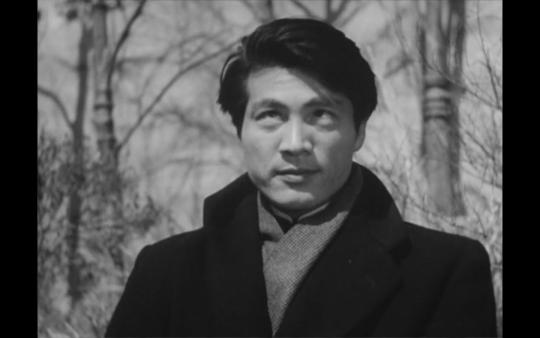
I first got wind of who Arsène Lupin was when I was growing up in Japan as a child. As strange as it sounds Lupin was big in Japan especially after World War Two. The Japanese did their own take on the Lupin character using Japanese actors and plot lines but it was Lupin.
I don’t know how exactly but I remember watching these scratchy DVDs of these Lupin inspired films. I think it was one of my parents’ Japanese friends who was mad for all things Lupin and he had studied French literature in France. Jogging my memory I now recall these black & white films were done in the 1950s. One starred Keiji Sada and the other version I remember was with Eija Okada (he was in Resnais’ classic film, Hiroshima Mon Amour) as Arsene Lupin called (I think) Kao-no Nai Otoko. I didn’t understand most of it at the time because it was all in Japanese and my Japanese (at the time) was pitiful, but it looked fun.
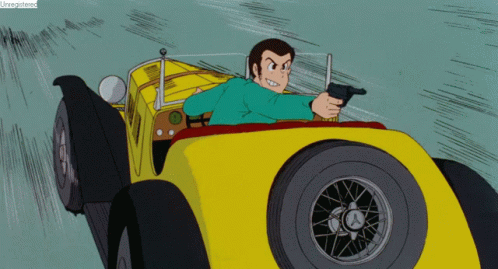
There was even a Japanese manga version of Lupin which was called Lupin III, - so named because he was the grandson of the real Arsène Lupin.

The 1960s manga series spawned generations of TV series which I do remember watching and finding it terribly exciting if somewhat confusing.
It was French expatriate friends whom my family knew that introduced me to the real Arsène Lupin. They had a few of the books authored by Maurice Leblanc. It was in French so I read them to improve my French but enjoyed the story along the way.
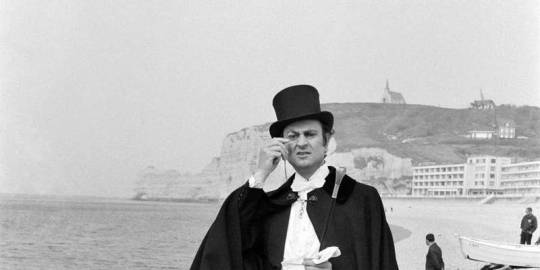
I also remember them showing me scratchy episodes of the 1970s Franco-German TV series ‘Arsène Lupin’ with the monocle wearing Georges Descrières in the lead role. It was a classical re-telling of the adventures of the aristocratic gentleman-burglar and very family friendly viewing. I don’t really remember much of it to be honest.
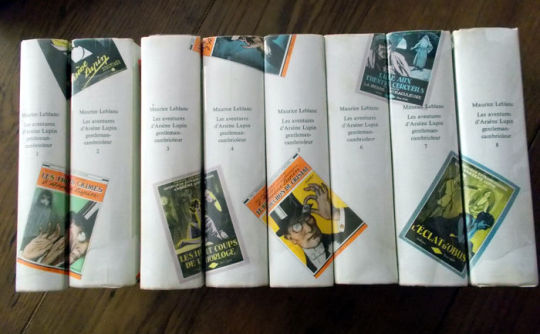
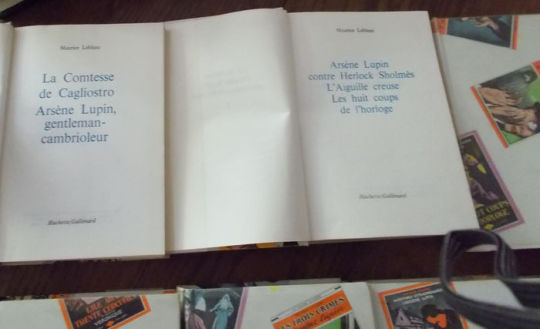
It was some years before I actually started to read more of the Maurice Leblanc’s novels and short stories collection. I have them all now. I was a teen and I remember being stuck in a snowed in a Swiss Alpine chalet and with nothing else to do but pull out a few dog eared books from the bookshelves belonging to our French host and read to pass the time.
I read Les Dents du tigre, Arsène Lupin vs Herlock Sholmes, and Les Huit Coups de l'horloge and thoroughly enjoyed them in the original French. I was already reading classic detective and mystery novels (Sherlock Holmes, Poirot etc) so it was natural to read the adventures of Arsène Lupin.
I haven’t got around to reading all the novels and short stories but I have read most of them and I enjoyed them all immensely. In the same way Conan Doyle, through Holmes and Watson, manages to conjure a convincing picture of late Victorian and early Edwardian England, so Leblanc manages to give us a taste of Belle Epoque France through the eyes of his suave gentleman-thief, Arsène Lupin.
Indeed it's a lot like reading Sherlock Holmes in that you're always trying to figure out how he did it, but the difference is that you are rooting for the bad guy. You can’t help but be drawn to this gentleman thief who is charming, comic, playful, and romantic and generous. Lupin is not an intellectual puzzle-solver but first a master criminal, later a detective helper, who maintains his curious ethics throughout his adventures. In this regard he is very much the anti-Sherlock Holmes; and I wasn’t disappointed when I actually read the story where Lupin faces off with Holmes himself. Brilliant!
I’ve also seen the 2004 French movie with Romain Duris in the Lupin lead role and it also starred the majestic Kristin Scott Thomas and the sexy Eva Green.

It was a decent adventure flick and it was a clear confluence of different Lupin novels (The Queen's Necklace (introducing Lupin's childhood), The Hollow Needle (where the treasure is the macguffin of the story), The Arrest of Arsène Lupin (the gala on the ship as a backdrop) and Josephine Balsamo, (one of Lupin’s most memorable opponents in the The Countess Of Cagliostro).

Romaine Duris, a fine classical actor, was I felt miscast because he didn’t have Lupin’s levity of wit and be at ease within himself. I love Duris in his other films but in Arsène Lupin and even in his other film, Moliere, he seemed ill at ease with the role. Perhaps that’s just me.
The latest Netflix adaptation (or reimagining to be more precise) is a welcome addition to the world of Arsène Lupin.If you don’t over-think it, it’s bags of fun.
Omar Sy is immensely likeable. Sy is a deservedly a big star in France - he won the best actor César for “The Intouchables,” an international hit - and has played forgettable secondary characters in big-budget American special effects movies (he was Chris Pratt’s assistant in “Jurassic World” and a minor mutant in “X-Men: Days of Future Past”). It was reportedly his desire to play Arsène Lupin, whom he’s compared to James Bond (“fun, funny, elegant”), that led to the series, created by British writer George Kay. And it is on his charm that the series largely, though not entirely, rests.
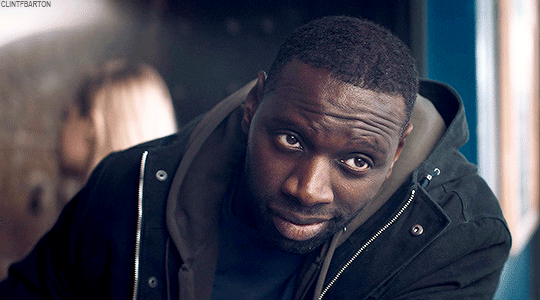
So the basic story revolves around a jewellery heist. Sy plays Assane Diop, a first-generation French-Senegalese man in contemporary Paris. A collection of Lupin stories, a gift from his father - whose undeserved fate Assane set himself to avenge in long-delayed, Count of Monte Cristo style upon a criminal tycoon - has made the actual Lupin books a foundation of his life and profitably illicit career. This fan-ship goes as far as borrowing practical ideas from the stories and constructing aliases out of anagrams of “Arsene Lupin,” a habit that will attract the interest of a low-level police detective (Soufiane Guerrab as Youssef Guedira) who shares Assane’s love of the books. (That the detective also shares an initial with Lupin’s own adversary, Inspector Ganimard, is possibly not a coincidence.)
Among the many comic delights of Lupin, is an unspoken one. Time and again, the show’s hero, master thief Assane Diop is able to slip into a place unnoticed, or by assuming a minor disguise that prevents witnesses from providing an accurate description of him to law enforcement.

Why is this funny?
Because Omar Sy is six feet three (and, since most actors are short, seems even taller), is roughly as wide as soccer pitch, and is memorable even before he flashes his infectious million-Euro smile. This is not a man for whom anonymity should be possible - even allowing for racial bias in a majority-white country, Assane would be memorable and distinctive - and Lupin seems cheekily aware of this. Like the various incredible sleights of hand Assane deploys to pull off his thefts and escapes, his ability to be anyone, anywhere, is treated more as a superpower than as something even the world’s greatest criminal would be able to pull off.
At one point, when he’s slated for a cable news appearance as a much older man, we learn that Assane is also a master of disguise. The revelation of this skill arrives with a wink in the show, and it feels pointless to ask where he learned it, or how he affords movie-quality latex and makeup. Or rather, asking the question feels wrong.
We know this is impossible, the show seems to be asking its viewers again and again, but isn’t it so much fun?
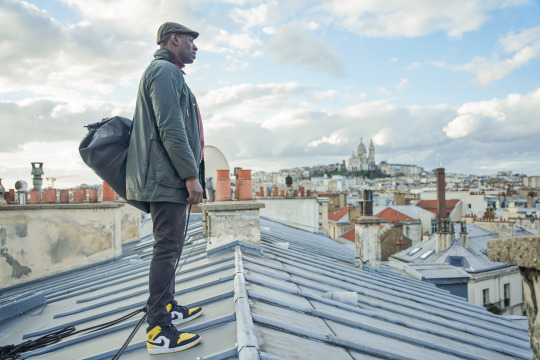
The performances and the production - it has that particularly European filmic quality of feeling natural even when it gets stylish - keep the series warm even as the plot is made up of incredulous contraptions that require everything to go right at just the right time and for human psychology to be 100% predictable. Its physics are classical rather than quantum, one might say, and like the world itself, which becomes more curious the deeper you peer into things, it is best handled along the surface. You do not want to take too much time working out the likelihood of any of this happening. Just go along for the ride.
Somehow, though, it all works because Sy is so magnetic and charming that questioning plot logic feels wildly besides the point. Though he never looks appreciably different in his various aliases (including one ill-conceived live-TV appearance done under old-man makeup and a thick beard), he changes his posture and voice ( if you watch it in French that is) enough to allow for the willing suspension of disbelief, in the same way that any lead actor as Superman has to do when playing Clark Kent. But Sy and the show are at their strongest when Assane is just being his own Superman self, utterly relaxed and confident in his own skin, and so captivating that his ex-partner, Claire, can’t really resist him despite ample reason to.

If Assane seems practically perfect in every way, he is not perfectly perfect. His most obvious failing is that his criminal shenanigans and revenging make him less than reliable in his daily life, affecting his relationships with ex-partner Claire (Ludivine Sagnier, whom non-French audiences might recognise from “The Young Pope” and “The New Pope”), who despairs of his inability to show up on time to see his son Raoul (Etan Simon). Like Sy, Sagnier brings a lot of soul to her part - though onscreen far less, she’s as important as Sy to the series’ success - and the two actors have great chemistry. Also impressive and key to creating sympathy are the actors who play their flashback teenage selves, Mamadou Haidara and Ludmilla Makowski. Really, you could do away with action elements and build a series around them.
This is a pity because Lupin often fumbles its emotional reveals in other parts - the story of Diop being torn between his job and his family feels like wheel-spinning, rather than genuine emotional intrigue.

Soufiane Guerrab is wasted in the Young Detective Consumed by the Case role and spends most of this season pinning colour printouts of book covers to cork boards and getting waved off by his colleagues, who are all blinded or otherwise hampered by careerism.
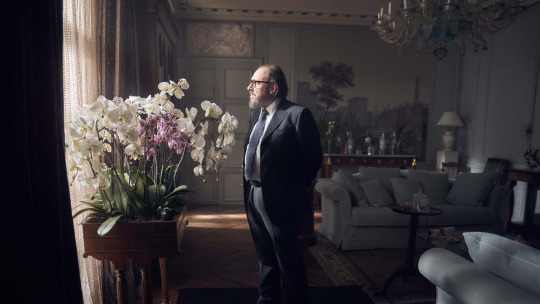
But to my mind the weakest link is the villain himself and his daughter. Veteran actor Hervé Pierre hams it up as Hubert Pellegrini, a business tycoon who is the patriarch of the Pellegrini family. He just comes across as animated cartoon villain with no character depth (think moustache twirling Russian villain, Boris Badenov, in the Rocky & Bullwinkle cartoon shows). He just emotes anger a lot without any nuance or hint of complexity.
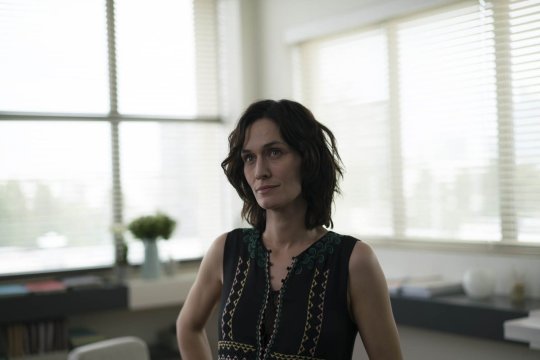
Even Clotilde Hesme who plays the daughter who is unaware of her father’s criminal tendencies is miscast. For the record I adore Clotilde Hesme as she one of France’s most talented classical actresses (that non-French outsiders will not have heard of). She is a classically theatre trained actress and is one of the best stage actresses of her generation that I have ever seen. I’ve seen her in plays where she is just mesmerising. She has said before that she’s more comfortable on the stage than she is on the screen. And when she has been on screen she still has been a powerful presence. She’s actually won a César too. Here in Lupin, she seems to have no agency and looks bored with nothing really to do.I really hope they give her more scenes in the next part of Lupin.
The series is at its best when following Diop enacting his plans, and when revealing each one from a different vantage, making us privy to every moving part like a magician revealing his secrets. The show captures the momentum of a clockwork heist, the tension of sudden obstacles and the ingenuity of improvised responses, with thrilling precision (especially in “Chapter 1 - Le Collier de la reine,” directed by Now You See Me’s Louis Leterrier).
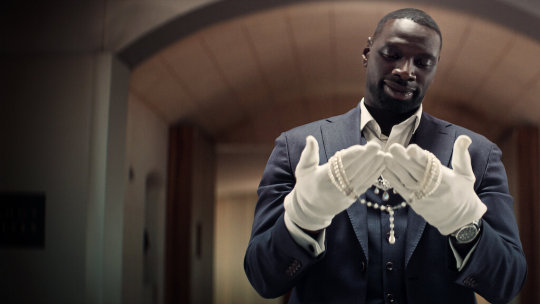
Lupin is also politically incisive when it wants to be; it brings to mind Ladj Ly’s Oscar-nominated 2019 film Les Misérables, which adapted the broad strokes of Victor Hugo’s novel about the 1832 Paris Rebellion, and modernised the story by focusing on the police brutality faced by non-white Parisians.
Lupin opens with Diop disguised as cleaning staff and entering the Louvre after-hours, alongside dozens of forgotten, anonymous non-white workers as they pass by “La Liberté guidant le people,” Eugène Delacroix’s famous painting of the July Revolution of 1830 which replaced France’s hereditary rule with popular sovereignty.
Before any semblance of plot or character, Lupin centres broken ideals and promises unkept (without giving too much away, the show’s primary villain has much more nationalistic view of French culture and history which merely adds to a cartoonish caricature than a complex character). The rest of the episode is about valuable jewels once owned by Marie Antionette - one of the most recognisable symbols of wealth and extravagance in times of extreme poverty - which are put up for auction by the Pelligrini family, and bid on by other wealthy collectors with bottomless purses and no sense of irony.
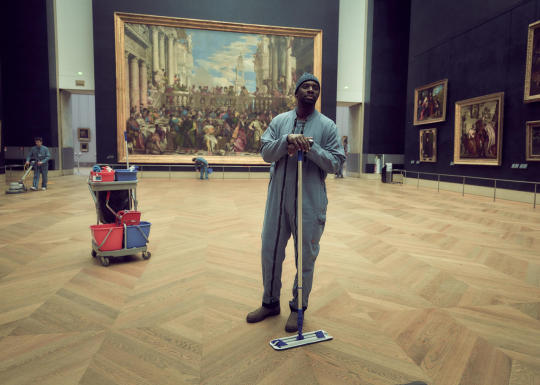
Granted, beyond this auction subplot, explorations of race and class are largely limited to individual interactions, but the show continues to refer back to (and implicitly comment on) its source material in ways that wink at the audience. An elderly, unassuming target of Diop’s schemes seems like an unlikely victim at first - Diop, though he acts in his own self-interest, usually displays a moral compass - until this victim reveals the colonial origins of her wealth, immediately re-contextualising the ethics of the situation, in a manner that Leblanc’s stories did not. (The show is yet to apply this lens to Arsène Lupin himself, who Diop treats with reverence, but that’s a secondary concern since Lupin is entirely fictional in-world).
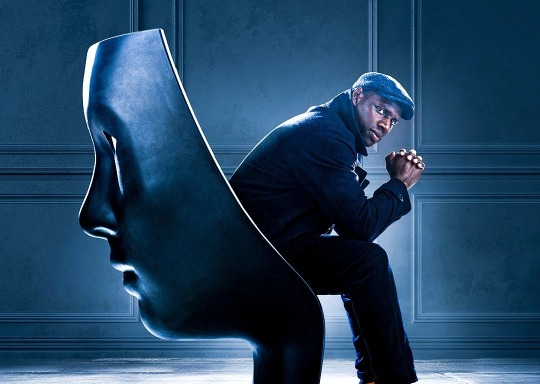
Barring some nagging structural problems - like cutting to flashbacks when things are getting exciting, or epilogues that feel ten minutes too long - Lupin mostly works. It plants a few personal seeds early on, which it keeps hinting at without fully addressing, but by the time its scattered elements come into focus, the show finally figures out how to weave them together, and delivers a mid-season cliffhanger that renders many of these flaws irrelevant.
Lupin manages to have fun even with an antiquated premise - the story of a suave con-man who charms his way through high-profile robberies - while adding just enough new spin on the concept to feel refreshing. Omar Sy may not have much to work with, but his alluring presence makes Assane Diop feel like a worthy successor to Arsène Lupin.
Lupin isn’t going to win César, BAFTA, or Emmy awards, or even turn heads for its ability to develop tertiary or even secondary plots or characters - that doesn’t really matter. You’re there to see a difficult hero be difficult and heroic - everyone else is there to be charmed, vexed, or eluded by them. Sy’s performance bounds off the screen, and is almost musical. He floats through scenes like he glides over the roofs and through the back alleys of Paris; he outmanoeuvres his foes with superior literary references and sheer athleticism. He is irresistible and also good at everything he tries, even kidnapping.

I would encourage anyone to watch Lupin for a fun care free ride. But the only caveat I would make is watch it in the original French.
If you don’t know French then put on the subtitles to understand (that’s what they are there for). The real crime is to watch this (or any film or television series) dubbed in a foreign language. It’s disrespectful to the actors and film makers and it’s silly because it’s comical to watch something dubbed over.
Please watch it in the original French.
Then go and read the books. You won’t regret it.
Thanks for your question.
#question#ask#lupin#omar sy#netflix#tv show#culture#personal#arsene lupin#japan#maurice leblanc#france#french#society#arts
49 notes
·
View notes
Photo

Title: Doomed to Fail: The Incredibly Loud History of Doom, Sludge, and Post-Metal
Author: J.J. Anselmi
Release: February 11, 2020
Genre: music, nonfiction, memoir
Order here!
When I first heard Metallica’s “Battery,” I knew I’d found the real shit, J.J. Anselmi’s newest states in an early chapter. The social alienation, the depression, the anger, and the preoccupation with death: it was the music I needed, right when I needed it. Similar stories abound in volumes like Jon Wiederhorn’s Raising Hell and a recent academic anthology of gender, sexuality, and heavy metal analyses; the typical pathway to extreme music, it seems, is youthful aggression, disaffection, or malaise. It’s not very cool to recall that your teen rage was tempered rather than catalyzed by religion. Even less cool to admit that if you are currently swimming in doom’s murk, you only took the chilly plunge because of boys and men.
A few antecedents, then: The Minutemen. Captain Beefheart. Def Leppard. The Mars Volta.
Edgy enough, weird enough, almost metallic enough, nearly harsh enough. It’s easy to see the slippery slope, to hear my mother’s voice in my head. If that’s what you want to spend your money on, she said of The Mars Volta’s full-length debut, I guess it’s your money. A year or so later, she would be interrogating me about certain media downloads to the family desktop--not because I was infringing copyright via poorly-labeled LimeWire files, but because the music was the sort that drove away the Holy Spirit (to be fair, Master of Puppets didn’t inspire any epiphanies). Mormons are very concerned with the Spirit’s presence. Movies and music are the fastest and most seductive shortcuts to becoming lost in a mire of worldliness, spiritual miasma, and sin. Interestingly, my mother was less perturbed by my weekly emails to a much-older dude I’d “met” on a geek forum, he of the curly beard and Captain Beefheart appreciation. For a suburban teenage girl reading SPIN in 2003, music in particular seemed a clear Point A to ineffable cool’s Point B, as evidenced by--although at the time I wouldn’t have phrased it thus--fuckability. Whiteboy music journalists, from Klosterman with his contrarian hair metal love to Azerrad deifying The Minutemen, had Ideas about what made rock music good. It was a trail of breadcrumbs that could be followed by anyone, so maybe I’d start off as me and end up as Brody Dalle. Of course, wanting to be punk is proof that you're destined to remain square, so the guy in the homemade Leftöver Crack t-shirt likewise stayed a mystery. Meanwhile, I made a fansite about The Mars Volta for my web design class, wrote an AP essay about why filesharing is good, actually, and counted the days ‘til graduation.
Euro-style power metal is romantic. Good make-out tunes. The fine art of getting into something that someone you fancy is into, well, that’s bog-standard for a huge swath of humanity and I’ve never been above it because I do like exploring new things. However, there’s a certain flavor of man who encourages women to listen to music he likes not out of genuine enthusiasm and desire to share, but because filling up a vessel with water from your spring means that you, yourself, will never be thirsty. There’s no rearranging of boundaries necessary for the recommender, no exchange of gifts, no call to reassess your favorites in light of new information. Where things get hairy is when women take what is conferred and make it their own. The vaguely fringe music that had already primed my eardrums led away from flourish-laden prog and high-camp power metal, into weirder and uglier places my boyfriend at the time had no interest in traversing. It stings a bit to realize that your heart is big enough to hold all the loves that comprise the person you love, that your desire is malleable and open, and that they have always been enough by themselves, fully-formed, unswerving as a highway through the desert. It hurts to hear that you’re not doing the thing (metal or comics or horse racing) in the way that was shown you, properly. This might be when the rage starts to seep back in, poisoning the spring. But solo concert-going is only lonely until you make it past the venue’s threshold. After that, the Spirit is always with you.
Myself, I’ve seldom found the divine in places it was supposed to inhabit.
The thing about The Mars Volta that embedded itself in my ribcage seventeen years ago wasn’t their tight jeans: it was how they seemed to have misplaced all their fucks. Prior to Sacha Jenkins’ 2003 SPIN review, the ugliest thing I’d sought out of my own volition was an Anti-Flag album, a suitably edgy move in George W. Bush’s America. Deloused in the Comatorium did not care if you understood what it was going for; an impetus existed behind the unexpected time signatures, dog-bothering vocals, and salsa moves that was alluring in its opacity and bloody-mindedness. A bunch of weirdos recorded a fuck-you in album format because they wanted to. Atmosphere, emotion, tension could all be far more important to a song than melody or lyrics. Listenable was up for debate. Art formed its own excuse. In this way, although the two groups couldn’t be further apart sonically, my heart was made ready for Katatonia. Then Oceans of Slumber. Torche. Black Castle, Thou, Bell Witch, Cult of Luna, on and on, an endless sinkhole opening up.
A great and appealing contrast of doom metal lies in the apparent dumbassery of its sound. This is broadly true of all metal, of course; Coal Chamber or Megadeth, Black Sabbath or Pantera, metal was music for drop-outs, stoners, school shooters… the purview not only of miscreants, but of boys and stupid boys at that. Punk seemed the smarter option, if you had anger issues, had heard of feminism, or tended toward hobbies like trying to form a Young Democratic Socialists chapter at your school. For older me, trying to rewrite a religious mind into a liberal and cosmopolitan one, prog metal was defensibly slick and impressive, while power metal seemed less openly hateful toward women. All the while, doom lurked beneath layers of nay-saying. Adult men I’ve known, talented guitarists with good ears and smart hands, have sneered at all the seeming lack populating the slower subgenres--lack of beauty, skill, or even aggression in its most recognizable and masculine forms. Yet, for a listener whose favorite pastime is intellectualizing everything in sight, doom is the other side of the sun.
I don’t… really… understand what a tritone is. I know it’s important, and I could do a bad approximation of the opening of “Black Sabbath,” but definitionally I’m at a loss. Often I have no idea which instrument is making the sound that I like. I don’t know anything about music theory or how to talk with authority about what makes music good, important, or even what differentiates music from other sounds. Maybe a drone metal track is a collection of sounds, rather than a song? My Dream Theater-enthusiast ex figured since I was a nebbishy bespectacled geek, prog would be all I needed. The thinking man’s metal! No one has ever felt threatened by Steven Wilson. You can remain Smart™ while listening to assorted finger-wanky Europeans. In contrast, kicking it with a Texas weed-cult at the skatepark is stupid. Obviously, every genre of metal contains its geniuses, and one of doom’s most lovable qualities is how often unquestionable finesse arrives wrapped in brutal, bizarre, counterintuitive paper. But beyond the plausible deniability of technique and philosophy found in groups like Neurosis is something even more compelling. Sometimes, it just fucking sounds cool.
It sounds like that because someone did it intentionally, gleefully. I wrote a novel like that because I liked how it looked, sounded, felt.
One of the birthrights of normative (white, cis, straight, abled) masculinity is feeling. If you turn out queer, or are socialized as female, or live with the massed connotations of a racist culture written over your skin, overt and violent emotion may be anathema. The power of accessing a fully human emotional spectrum for the first time should not be underrated. The doom bands I grew into loving, independent of the people closest to me who putatively liked similar music, are into feelings. Even, or maybe especially, the ones authority figures wish you didn’t have (and those aren’t always the bad ones. Authority hates it even more if you feel good). If there’s a thing Mormons don’t countenance, it’s feeling bad things and informing people of them, or feeling the wrong good things. Doubt is a big no-no. It’s always better to feel shame when possible. If the Spirit isn’t telling you what you know it should, it’s on you for not listening enough, praying enough, being enough. If the Spirit’s voice isn’t soft and gentle, if it instead materializes in the best growl this side of Obituary, well, Satan quotes scripture too. Meanwhile, doubt--lack of clarity, spiritual and emotional murkiness, bone-deep ambivalence--is doom’s molten heart. Meanwhile, shame--at the self’s fondled hatreds, as C.S. Lewis has it, for things desired and things questioned--is shunned by doomsayers.
The body experiences advance warning. Fury, fear, arousal. Sure, I attribute my openness toward weird music to frustrated teen lust. Sure, I owe Roy Khan and Tony Kakko for first love and redrawn horizons. When fire dies, what’s left is not absence but ash, fertile and generative. Doomed to Fail recognizes that continual plumbing and revolving in uncertainty for its beauty and possibility. Whatever formed my rage and love, those two sides of the same forbidden coin, they belong to me now.
5 notes
·
View notes
Photo

18. what is your favorite star wars book or comic?
THIS IS A REALLY HARD QUESTION. If you absolutely made me choose, I would probably pick Wild Space because we all know how much I love that book, but I’m going to choose a different one because it’s been so strongly on my mind lately--Darth Vader: Dark Lord of the Sith.
I love many of the Star Wars comics (especially the Obi-Wan & Anakin comic and Mace Windu: Jedi of the Republic comic!), I was reading them well before this one came out, but I think it’s the one that actually legit vaulted me into wanting to dig into the comics hard. It’s certainly a very large chunk of why I have any kind of feelings about the Darth Vader parts of Anakin’s life, where before this I didn’t really care that much at all.
This comic is drawing the connections between Anakin and Vader in amazing ways, it’s highlighting everything about the choices he made and how he had other options, often shoved right into his face, and he still denied that they were there. It’s illustrating beautifully all the worst parts of the character, when they’re dialed up to a hundred. It’s just straight up fun in all the extra-as-hell moments!
It’s the comic that really engaged me in a way that dragged me into this part of the Star Wars franchise. I dunno if it’s the best written one, but it’s the one that’s gotten me to do the most talking and the most at showing the bridge between Anakin and Vader, how they’re absolutely the same person. And it’s the one I most look forward to reading!
19. what’s your opinion on legends/expanded universe?
I LOVE IT. Parts of it are absolutely terrible and so many people just doing whatever without any kind of oversight led to a gigantic mess and a lot of the writers in Legends were just Not Good At Writing Star Wars, but there’s a lot of really great stories and characters that were told there. I still read tons of Legends stuff and find them very valuable and worthwhile experiences to have, they can still have some great insights or just be fun to consume!
The sticky thing, of course, is that they’re not canon and they kind of never really were. George Lucas made that super clear and I think it’s actually a really, really smart idea on Disney’s part to just make Legends and canon two separate worlds. You cannot piece them back together anymore, you couldn’t as soon as Ben Solo existed, but even as far back as the prequels material, the Jedi Apprentice books, etc., cannot work with The Clone Wars anymore.
It’s fine to enjoy them! It’s fine to live in that space! I really love Mara Jade, for example, and I love Ben Skywalker a lot, too! And I’m sad that I’ll probably never get to see them in a Saga movie or in anything new again, but I’m also willing to roll with it because canon has brought some amazing things with it (including a whole lot of queer characters that Legends N E V E R gave us), as well as all those people who didn’t have any idea how to write the Jedi? *gleefully drop-kicks them over the side of a cliff*
25. which character do you have a love/hate relationship with?
I’ve already covered Qui-Gon and Palpatine, so this time I’m going with: JAR JAR BINKS.
About the time I started coming back to Star Wars after a long hiatus, the Darth Darth Binks theory had just been posted and I was so taken in by it, I LOVED IT. Looking back, I’m not sure if it actually was intended (that quote about “Jar Jar is the key to all of this” is taken WAY out of context for example, George was specifically talking about special effects, that if they could nail the way Jar Jar looked, then the effects would be pulled off), but I still enjoyed it.
And I think what happened with Ahmed Best is a fucking shame, like, JFC, Star Wars fandom, this is a really ugly look for us. It makes me defensive of Jar Jar’s character, including that a lot of kids actually really loved the character!
But also, yeah, Jar Jar is really kinda super racist and I get that they didn’t intend for him to be that, as well as he is at least played by a black guy, but it’s still pretty awful. And, yeah, he is annoying.
Yet, I can’t help but feel sympathy for him when it’s super clear that people find him annoying all the time. Qui-Gon and Obi-Wan were annoyed by him, Padme in TCW makes it R E A L clear that she’s annoyed by him, nobody actually treats him like the Galactic Senator that he is, his ending is actually really sad--and this is someone who genuinely wanted to help people. Being mean to Jar Jar, someone who was trying his best to be cheerful and helpful, feels kind of cruel after awhile.
Still. I can never bring myself to like him or the storylines he gets. He’s really, really annoying! And the space Jamaican accent still makes me cringe the way it’s played. So, I am really, really ambivalent about Jar Jar, I’m really torn about the character.
19 notes
·
View notes
Link
NEW YORK -- Cherish Patton recalled springing into action when a friend sent her a message that a New York City police officer had grabbed a petite protester by her hood and had flung her to the pavement.Patton, who has organized several Black Lives Matter protests, posted a plea on social media for help identifying the officer. She also called her friend for details on the protester, who had been whisked to the emergency room. "Oh, it's Michelle," her friend told her."Wait, white Michelle who I argued with for three years? White Michelle?" asked an astonished, and confused, Patton, who is Black. The hurt protester was a former classmate, Michelle Moran, 18, whose conservative commentary on politics and social issues had made Patton, 18, cringe in high school in Manhattan.George Floyd's death in police custody in Minneapolis pushed anguished Black people into the streets, as had happened countless times after police killings of Black people. But this time, the Black protesters have been joined en masse by white people, in rallies across New York City and around the country.Now, though, the protests in New York City are ebbing somewhat, though they are still drawing thousands of people to some events, particularly on weekends. And outside City Hall, there is a growing encampment of diverse demonstrators who are demanding deep cuts in the police budget.And so that naturally raises a question for Black activists who have long been dedicated to the movement: Will the commitment of white protesters endure?Some of the white protesters identify as liberal and said they had long been sympathetic to the Black Lives Matter movement but had not done much, if anything, before to show it. Other white people said they had once believed that police did not discriminate against Black people but had changed their minds because of Floyd's killing.Some Black people have responded to the influx of white protesters with a mix of hope, I-told-you-so sentiment and skepticism. For longtime activists, there is a frustration that it took a global pandemic and yet another death at the hands of police to push white people to publicly embrace the movement. They wonder how long white people will keep showing up."We see so many white people who hate us, absolutely hate us for the way that we look," Patton said, adding, "To see white people on the front lines, it's exciting to know that these younger generations of white people care."This is a different level of protest."Still, some Black protesters and activists expressed ambivalence about the shift.Opal Tometi, 35, a co-founder of Black Lives Matter, called the outpouring "beautiful," but she added, "I have minor trepidation, like most, that this could end up being a trend."When the social media posts die down, will the actions and people's conviction for change die down too?" she said in written responses to questions. "I have been waiting for this moment since I was 12 years old as the only Black kid on the block. I've always known I've been a part of something bigger than myself. I didn't know how it would unfold, but here we are."Anthony Beckford, president of Black Lives Matter Brooklyn, recalled being at a protest in Brooklyn and feeling uneasy about the large numbers of white people who had shown up."I looked around and I was like, 'I feel outnumbered. Is my life in danger?' " said Beckford, 38, who added that he feared that some of the protesters were white nationalists infiltrating the march.He said he and his friends have had to tell some white protesters that they could not just show up and take over."Our fight is our fight. Their privilege can amplify the message, but they can never speak for us," Beckford said. "There have been moments where some have wanted to be in the front. I've told them to go to the back."Two young white people new to the movement tried to organize a protest in Bay Ridge that Beckford found out about from other white people. He said he shut it down. "Their messaging was, 'Yes, Black lives matter, and police lives matter, too.' I was like, no. You can think of the 'Kumbaya' moment when we get our mission accomplished," he said.Research does seem to confirm Black protesters' sense that they have been joined for the first time at demonstrations against police brutality by large numbers of white protesters.One study of the Floyd protests on one weekend this month found overwhelmingly young crowds, with large numbers of white and highly educated people. White protesters made up 61% of those surveyed in New York, according to the researchers, and 65% of protesters in Washington. In Los Angeles, 53% of protesters were white.Opinion polls have also shown that racial attitudes among white Americans have been shifting, with a sharp turn by white liberals toward a more sympathetic view of Black people.Moran, the injured white protester whose plight was noticed by Patton, said she was a newcomer to the movement. She said her parents and a childhood in a predominantly white block of Woodlawn, in the Bronx, initially shaped her worldview and politics."I slowly but surely opened my eyes to the horrors of the criminal justice system," said Moran, who said she turned a corner a year ago, influenced by readings, the news and the documentary "Requiem for the American Dream" about income inequality.As for her parents, Moran said, "I'm still trying to change them, but they're not budging."Patton, her voice hoarse from daily chants and speeches, said she remains skeptical of some white protesters who she believes are showing up to "wreak havoc."But talking now with Moran, Patton said she saw that some white people were willing to be allies.The teenagers have gone from barely speaking to now having a mutual respect for each other, they said.These issues are playing out in school settings across the city as well.When Theo Schimmel, 14, who identifies as white and Indian, decided to hold a protest for children in Washington Heights, where he lives, he reached out to his classmates from Bank Street School, Melany Linton, who identifies as Afro-Latina, and Stella Tillery-Lee, who is Black.Asked whether he chose them because they were Black, Theo paused and then said, "Yeah, but I didn't really focus on that aspect of it. I knew how important this was to them in classes."Stella, 14, who lives in Harlem, said she appreciated that Theo took the step that he did. "We definitely need more people that are not necessarily African American or Black helping to support our community because so many people are being bystanders, which is great, but it's not enough at all," she said.About 300 people showed up to join Stella, Melany and Theo on a lawn in Fort Tryon Park."Throughout history, people see Black people as inhuman or as objects, and that's ridiculous," Melany said in an interview. "The fact that so many things, like what happened to George Floyd, continue to go on in our country is so upsetting and disturbing that it really does strike a certain nerve in people, as it should."Among the protesters were teachers Ever Ramirez, who is Asian, and Shelby Brody, who is white. They held signs reading, "DEFUND THE POLICE. INVEST IN SCHOOLS" and "ASIANS FOR BLACK LIVES MATTER."Brody said they had learned more about themselves and racism by reading the book "White Fragility" by Robin DiAngelo and taking part in a group at school where white employees explored racism and their role in it.Brody had initially steered clear of the group. "I was called in by a colleague of color who rightly said, 'White people sitting out is part of the problem,' " Brody said.Also at the park protest was one of Melany's family friends, April Dinwoodie, 48, who splits her time between Harlem and Westerly, Rhode Island, where 95% of the residents are white.A biracial woman raised in the town by her white adoptive parents with white siblings, Dinwoodie said she moved to Harlem years ago as she searched for a connection to "my Blackness."Driving through the town recently, she said she could not believe what she saw. There they were, dozens of Westerly residents holding a Black Lives Matter protest."I was like, 'Oh, my gosh,' " she said, almost giddy. "I had to stop and pull over because I was crying, because my little town was having a protest. And I said, 'Well, look at that. That's new. That's new to me.'"Quite frankly," she said, "I didn't expect much from my town."For years now, mainly Black people have been on the front lines of issues that affect Black people, said Adilka Pimentel, 30, a lead organizer at Make the Road New York who identifies as Black Dominican.Pimentel has been involved in activism for a long time, since she was 14 years old. She pointed out that with the Floyd protests, more white people have the advantages of reliable health care, higher incomes and savings to take to the streets at a time when Black people have been especially hard-hit by the coronavirus outbreak."The same way that essential workers are mostly Black and brown and account for most of the deaths of COVID, they can't be out there because they have to feed their families," she said.She said she realized that social justice movements ebb and flow and hoped that the new protesters remained part of the movement."I worry about all the support dying down, mostly because it's what happens. Eric Garner. It died down. Mike Brown. It died down. Ferguson. It died down," Pimentel said. "The hope is that it stays. Those of us who have been doing the work are going to continue to do the work. If we feel like it starts to slip, we can be here to pick it up."Patton, the protest organizer, stood on 125th Street in Harlem recently at yet another gathering she had organized, this one to recognize Breonna Taylor, who was killed by police in Louisville, Kentucky.As she looked over the crowd and prepared to welcome them, a white man, a stranger, handed her a megaphone."Could the white man who brought this help us figure it out?" she asked, laughing. The crowd laughed with her.The man walked up and hit a button to amplify her voice.Patton put the megaphone to her mouth. The crowd had grown to hundreds in just a few minutes."I am so overwhelmed at how many of you came out!" she shouted. "Thank you for coming!"This article originally appeared in The New York Times.(C) 2020 The New York Times Company
from Yahoo News - Latest News & Headlines https://ift.tt/3dDvohH
0 notes
Text
Black Activists Wonder: Is Protesting Just Trendy for White People?
NEW YORK — Cherish Patton recalled springing into action when a friend sent her a message that a New York City police officer had grabbed a petite protester by her hood and had flung her to the pavement.Patton, who has organized several Black Lives Matter protests, posted a plea on social media for help identifying the officer. She also called her friend for details on the protester, who had been whisked to the emergency room. “Oh, it’s Michelle,” her friend told her.“Wait, white Michelle who I argued with for three years? White Michelle?” asked an astonished, and confused, Patton, who is Black. The hurt protester was a former classmate, Michelle Moran, 18, whose conservative commentary on politics and social issues had made Patton, 18, cringe in high school in Manhattan.George Floyd’s death in police custody in Minneapolis pushed anguished Black people into the streets, as had happened countless times after police killings of Black people. But this time, the Black protesters have been joined en masse by white people, in rallies across New York City and around the country.Now, though, the protests in New York City are ebbing somewhat, though they are still drawing thousands of people to some events, particularly on weekends. And outside City Hall, there is a growing encampment of diverse demonstrators who are demanding deep cuts in the police budget.And so that naturally raises a question for Black activists who have long been dedicated to the movement: Will the commitment of white protesters endure?Some of the white protesters identify as liberal and said they had long been sympathetic to the Black Lives Matter movement but had not done much, if anything, before to show it. Other white people said they had once believed that police did not discriminate against Black people but had changed their minds because of Floyd’s killing.Some Black people have responded to the influx of white protesters with a mix of hope, I-told-you-so sentiment and skepticism. For longtime activists, there is a frustration that it took a global pandemic and yet another death at the hands of police to push white people to publicly embrace the movement. They wonder how long white people will keep showing up.“We see so many white people who hate us, absolutely hate us for the way that we look,” Patton said, adding, “To see white people on the front lines, it’s exciting to know that these younger generations of white people care."This is a different level of protest."Still, some Black protesters and activists expressed ambivalence about the shift.Opal Tometi, 35, a co-founder of Black Lives Matter, called the outpouring "beautiful,” but she added, “I have minor trepidation, like most, that this could end up being a trend."When the social media posts die down, will the actions and people’s conviction for change die down too?” she said in written responses to questions. “I have been waiting for this moment since I was 12 years old as the only Black kid on the block. I’ve always known I’ve been a part of something bigger than myself. I didn’t know how it would unfold, but here we are."Anthony Beckford, president of Black Lives Matter Brooklyn, recalled being at a protest in Brooklyn and feeling uneasy about the large numbers of white people who had shown up."I looked around and I was like, ‘I feel outnumbered. Is my life in danger?’ ” said Beckford, 38, who added that he feared that some of the protesters were white nationalists infiltrating the march.He said he and his friends have had to tell some white protesters that they could not just show up and take over.“Our fight is our fight. Their privilege can amplify the message, but they can never speak for us,” Beckford said. “There have been moments where some have wanted to be in the front. I’ve told them to go to the back."Two young white people new to the movement tried to organize a protest in Bay Ridge that Beckford found out about from other white people. He said he shut it down. "Their messaging was, 'Yes, Black lives matter, and police lives matter, too.’ I was like, no. You can think of the 'Kumbaya’ moment when we get our mission accomplished,” he said.Research does seem to confirm Black protesters’ sense that they have been joined for the first time at demonstrations against police brutality by large numbers of white protesters.One study of the Floyd protests on one weekend this month found overwhelmingly young crowds, with large numbers of white and highly educated people. White protesters made up 61% of those surveyed in New York, according to the researchers, and 65% of protesters in Washington. In Los Angeles, 53% of protesters were white.Opinion polls have also shown that racial attitudes among white Americans have been shifting, with a sharp turn by white liberals toward a more sympathetic view of Black people.Moran, the injured white protester whose plight was noticed by Patton, said she was a newcomer to the movement. She said her parents and a childhood in a predominantly white block of Woodlawn, in the Bronx, initially shaped her worldview and politics.“I slowly but surely opened my eyes to the horrors of the criminal justice system,” said Moran, who said she turned a corner a year ago, influenced by readings, the news and the documentary “Requiem for the American Dream” about income inequality.As for her parents, Moran said, “I’m still trying to change them, but they’re not budging."Patton, her voice hoarse from daily chants and speeches, said she remains skeptical of some white protesters who she believes are showing up to "wreak havoc."But talking now with Moran, Patton said she saw that some white people were willing to be allies.The teenagers have gone from barely speaking to now having a mutual respect for each other, they said.These issues are playing out in school settings across the city as well.When Theo Schimmel, 14, who identifies as white and Indian, decided to hold a protest for children in Washington Heights, where he lives, he reached out to his classmates from Bank Street School, Melany Linton, who identifies as Afro-Latina, and Stella Tillery-Lee, who is Black.Asked whether he chose them because they were Black, Theo paused and then said, "Yeah, but I didn’t really focus on that aspect of it. I knew how important this was to them in classes."Stella, 14, who lives in Harlem, said she appreciated that Theo took the step that he did. "We definitely need more people that are not necessarily African American or Black helping to support our community because so many people are being bystanders, which is great, but it’s not enough at all,” she said.About 300 people showed up to join Stella, Melany and Theo on a lawn in Fort Tryon Park.“Throughout history, people see Black people as inhuman or as objects, and that’s ridiculous,” Melany said in an interview. “The fact that so many things, like what happened to George Floyd, continue to go on in our country is so upsetting and disturbing that it really does strike a certain nerve in people, as it should."Among the protesters were teachers Ever Ramirez, who is Asian, and Shelby Brody, who is white. They held signs reading, "DEFUND THE POLICE. INVEST IN SCHOOLS” and “ASIANS FOR BLACK LIVES MATTER."Brody said they had learned more about themselves and racism by reading the book "White Fragility” by Robin DiAngelo and taking part in a group at school where white employees explored racism and their role in it.Brody had initially steered clear of the group. “I was called in by a colleague of color who rightly said, 'White people sitting out is part of the problem,’ ” Brody said.Also at the park protest was one of Melany’s family friends, April Dinwoodie, 48, who splits her time between Harlem and Westerly, Rhode Island, where 95% of the residents are white.A biracial woman raised in the town by her white adoptive parents with white siblings, Dinwoodie said she moved to Harlem years ago as she searched for a connection to “my Blackness."Driving through the town recently, she said she could not believe what she saw. There they were, dozens of Westerly residents holding a Black Lives Matter protest."I was like, 'Oh, my gosh,’ ” she said, almost giddy. “I had to stop and pull over because I was crying, because my little town was having a protest. And I said, 'Well, look at that. That’s new. That’s new to me.’"Quite frankly,” she said, “I didn’t expect much from my town."For years now, mainly Black people have been on the front lines of issues that affect Black people, said Adilka Pimentel, 30, a lead organizer at Make the Road New York who identifies as Black Dominican.Pimentel has been involved in activism for a long time, since she was 14 years old. She pointed out that with the Floyd protests, more white people have the advantages of reliable health care, higher incomes and savings to take to the streets at a time when Black people have been especially hard-hit by the coronavirus outbreak."The same way that essential workers are mostly Black and brown and account for most of the deaths of COVID, they can’t be out there because they have to feed their families,” she said.She said she realized that social justice movements ebb and flow and hoped that the new protesters remained part of the movement.“I worry about all the support dying down, mostly because it’s what happens. Eric Garner. It died down. Mike Brown. It died down. Ferguson. It died down,” Pimentel said. “The hope is that it stays. Those of us who have been doing the work are going to continue to do the work. If we feel like it starts to slip, we can be here to pick it up."Patton, the protest organizer, stood on 125th Street in Harlem recently at yet another gathering she had organized, this one to recognize Breonna Taylor, who was killed by police in Louisville, Kentucky.As she looked over the crowd and prepared to welcome them, a white man, a stranger, handed her a megaphone."Could the white man who brought this help us figure it out?” she asked, laughing. The crowd laughed with her.The man walked up and hit a button to amplify her voice.Patton put the megaphone to her mouth. The crowd had grown to hundreds in just a few minutes.“I am so overwhelmed at how many of you came out!” she shouted. “Thank you for coming!"This article originally appeared in The New York Times.© 2020 The New York Times Company
Source link
The post Black Activists Wonder: Is Protesting Just Trendy for White People? appeared first on Land of Fathers.
Black Activists Wonder: Is Protesting Just Trendy for White People? published first on http://landofourfathers.com/
0 notes
Link
“Yes!” There’s a way of answering the phone abruptly to someone familiar, someone who the person who picks up the receiver loves to hate, or at least likes to dislike. In Killing Time, a rather unappealing name for a show at face value, Hester Brook (Brigit Forsyth) is, for reasons not made immediately clear, nearing the end, having forged an illustrious career with a more than one prestigious and well-travelled orchestra as a cellist. One or two matters are left unresolved regarding how she ended up in the circumstances in which she finds herself – the social services have some involvement, and only some, not leaving her entirely alone, despite her express and repeated wishes to be left to get on with whatever life she has left. She doesn’t seem to have any outpatient or GP appointments regarding her condition, though it is possible that she simply pays no attention to them.
She still lets Sara (Zoe Mills), an “assistant social worker” in, however. Hester’s ambivalence to being helped is totally understandable: why do household chores if there’s state-sponsored help available? Like many a good play, where details have been paid attention to, the script shines. Hester is revealed to be far from a doddery and muddled person of pensionable age – she understands Skype and uses it with more proficiency than yours truly, and mobile telephony, digital television and recording devices are used with equal ease. This is true of many older people, of course, but it is unusual to see such a non-patronising and well-considered portrayal of an old spinster. There’s humour in the play, but it’s not from the traditional ‘old-therefore- stupid’ school of thought. It’s from a mind that remains sharp to the end.
Some excellent use of projections allows George (Robin Herford) to be more than an off-stage character, even if technically that’s what he is. The images displayed at the relevant points during the play helped to underline the action and dialogue, but the acting was of such a high standard that most if not all were ultimately unnecessary. At least they never proved distracting. What was a little odd was a revolving stage, which didn’t achieve much, mostly because the stage seldom moved around, and when it did, it never revealed anything that wasn’t already there.
It was almost inevitable that the second half would take a more serious tone, given how punchline-laced the first half was. But for a while after the interval, the comedy levels rose. Sara continues to visit, often discussing her own station in life. Perhaps this isn’t the most feasible thing a social worker would talk about when visiting a client, but I’ll forgive it here, as it makes for good character development.
While a lot of topics are covered in this play, it doesn’t feel like the kitchen sink has been thrown at it. Hester’s forthrightness is refreshing, keeping what is, essentially, a slow-moving narrative somewhat intriguing. I prefer the comedy value here, whether I liked the style of humour (more often than not, I did), over the possible melodrama this show might have been. There is, in the (ahem) dying moments of the play, some semblance of sentimentality, but after all that laughter, a pinch of poignancy was most welcome.
[See image gallery at http://ift.tt/1FpwFUw]
Hester bemoans the treatment of women after her own obituary is prematurely published, as her musical career is largely ignored in favour of details about a relationship decades ago: “It doesn’t matter what you’ve done! It’s who you’ve f– -ed that counts!” How very true – not fair, not right, but true. And it has often been said in recent years that there aren’t very many roles for older women to play – well, here’s one from Wordmills Productions, including an actor-as-musician part. A little tightening is required to make a good script a great one, but all in all, this is a most delightful and impressive production.
Review of Chris Omaweng
Word Mills Productions and Dead Letter Perfect in association with Park Theatre present the World Premiere of
Killing Time
By Zoe Mills
Directed by Antony Eden
Designed by Paul Colwell
Cast includes: Brigit Forsyth and Zoe Mills
Hester is determined to live her last days to the full. Even if it kills her…
Inspired by an original cello composition by Brigit Forsyth, which she will play live among a feast of cello classics, the pair star in this hilarious and irreverent brand new comedy. Written by her daughter Zoe Mills, Killing Time explores inspiration, music, life and the right to die.
With an ingenious mix of live cello, digital film and soundscape, Killing Time moves, amuses and provokes fresh thought on the most searching question we all may face: if you could leave the world your very last words… what would you say?
Brigit Forsyth has extensive television and stage credits including the BBC sitcom Whatever Happened to the Likely Lads and is currently appearing in Still Open all Hours.
Plays: 7 Feb – 4 Mar 2017
http://ift.tt/1NQfsF7
http://ift.tt/2kocoJ0 LondonTheatre1.com
0 notes
Text
Treat Your S(h)elf: A German Officer in Occupied Paris: The War Journals, 1941-1945 by Ernst Jünger (2019)
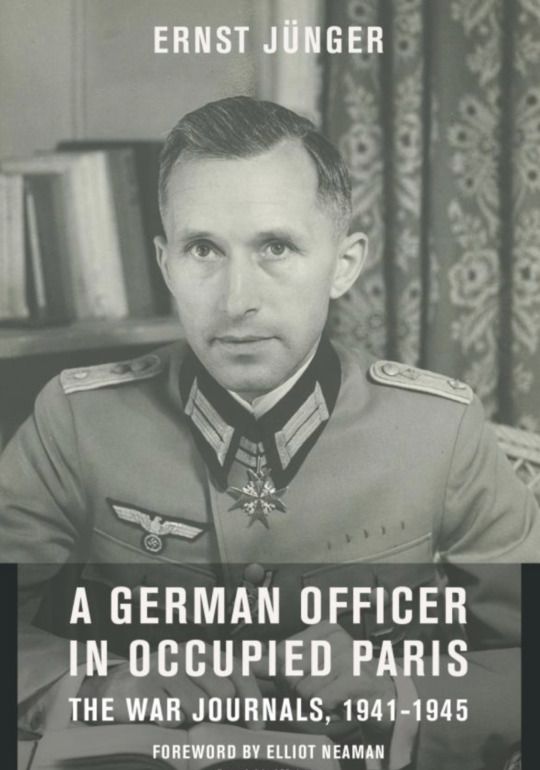
Keeping a journal: The short entries are often as dry as instant tea. Writing them down is like pouring hot water over them to release their aroma.
- Ernst Jünger, A German Officer in Occupied Paris: The War Journals, 1941-1945 (2019)
Paris is very much my home these days and so I enjoy reading about the history of this beautiful city. It is difficult to live in Paris today and conjure up much sense of the city in the early 1940s. It is indeed, as it is called throughout the world, the City of Light. But back in 1940 when France fell and Paris occupied until its liberation on 24 August 1944, it was a city in darkness. Like so much else that happened in France during World War II, the Nazi occupation of Paris was something entirely more complex and ambiguous than has generally been understood.
We tend to think of those four years as difficult but minimally destructive by comparison with the hell the Nazis wreaked elsewhere in the country. But as recent historians have shown the Nazi occupation was a terrible time for Paris, not just because the Nazis were there but because Paris itself was complicit in its own humiliation. As the historian Ronald Risbottom has shown in his compelling book, ‘When Paris went Dark’, “Even today, the French endeavour both to remember and to find ways to forget their country’s trials during World War II; their ambivalence stems from the cunning and original arrangement they devised with the Nazis, which was approved by Hitler and assented to by Philipe Petain, the recently appointed head of the Third Republic, that had ended the Battle of France in June of 1940. This treaty - known by all as the Armistice - had entangled France and the French in a web of cooperation, resistance, accommodation, and, later, of defensiveness, forgetfulness, and guilt from which they are still trying to escape.”
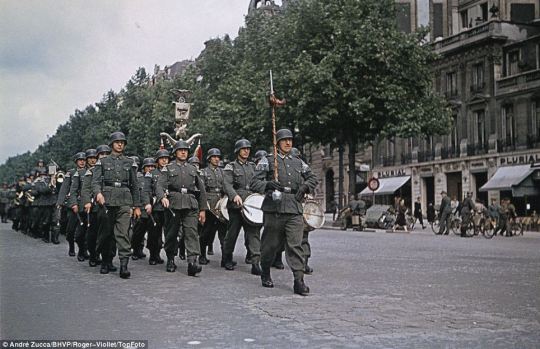
It is almost certainly a unique event in human history, one in which a ruthless and unscrupulous invader occupied a city known for its sophistication and liberality, declining to destroy it or even to exact physical damage on more than a minority of its citizens yet leaving it in a state of “embarrassment, self-abasement, guilt and a felt loss of masculine superiority that would mark the years of the Occupation. To this day, more than one visitor or foreigners living in Paris are struck by how sensitive Paris and Parisians remain about the role of the city and its citizens in its most humiliating moment of the twentieth century.
Indeed bringing up the subject with French friends, my French partner’s family, or even relatives (by marriage - such as a French aunt married to my Norwegian uncle or the French partners of my cousins here in France) is like walking on egg shells. It brings up too many distant ghosts for many families. Nearly every household has a story. It can be one of resistance or one of collaboration or (more likely) one of passive indifference and acceptance.
And yet I remain fascinated and intrigued partly because of historical interest and partly out of curiosity about the human condition under stress. In Britain - despite the trauma of daily bombardment from German bombers - the country was never invaded. And so whilst war brings out the best and worst in people, it was altogether a different experience to the one experienced by mainland European countries. I don’t think we British truly have understood of life was really like under occupation and the choices people are willingly or not made just to survive the war.

The history of Paris from 1940 to 1944 gives the lie to the old childhood taunt: Sticks and stones may break my bones, but names will never hurt me. The Germans for the most part spared Parisians sticks and stones (except, of course, Parisians who were Jewish), but the “names” they inflicted in the form of truncated freedoms, greatly reduced food and supplies, an unceasing fear of the unexpected and calamitous, and the simple fact of their inescapable, looming presence did deep damage of a different kind. It traumatised the city and its inhabitants in ways very little understood by others, especially Britain.
The carefully curated image of French resistance against the Nazis has been asked to serve critical functions in that nation’s collective memory. The manufactured myth served to postpone for a quarter of a century deeper analyses of how easily France had been beaten and how feckless had been the nation’s reaction to German authority, especially between 1940 and 1943. And yet the myth of a universal resistance was important to France’s idea of itself as a beacon for human liberty. It was also badly needed as an example of the courage one needed in the face of monstrous political ideologies.
There remained the ethical questions that would haunt France for decades: Which actions, exactly, constitute collaboration and which constitute resistance? It is still asking these questions over 70 years later. But behind such question lies a deeper and more haunting question of moral culpability that many are quick to throw responsibility - along with their own shame of inaction - onto others but not look inwards at their own guilt and passivity.

But what about the occupiers? What did they feel? Were the German Wehrmacht during the day simply tourists sitting in cafes, dining on gourmand food, buying silk stockings and the latest fashions for their wives back home and by night drinking and debauching on the cultural and seedy delights of Paris?
Moral culpability is a question that Ernst Jünger, the celebrated German author, never asks himself of his time as a German officer in Paris. But culpability is a question that looms large after reading the war journals of Ernst Jünger from 1941-1945, now published by Columbia University Press as A German Officer in Occupied Paris: The War Journals, 1941-1945. It should have been re-titled as a ‘A German writer pre-occupied by Parisian night life and his navel’.
Ernst Jünger (1895-1998) was what is sometimes called a “controversial” figure. A First World War hero who was wounded seven times, he was undoubtedly uncommonly brave. He also insisted that those who were less brave should play their part, forcing retreating soldiers to join his unit at gunpoint. His 1920 book Storm of Steel (In Stahlgewittern), recounting his war experiences and portraying war in a heroic light, made him famous. In the 1920s he became involved in anti-democratic right-wing groups like the paramilitary Freikorps and wrote for a number of nationalist journals. He remained aloof from the Nazis, however, and, while he boasted that he “hated democracy like the plague”, was more of a nationalist than a racist.

Jünger spent much of the Second as an officer stationed in Paris, where these war journals are an almost daily record of the views and impressions of a well-read literary figure, entomologist, and cultural critic, now available for the first time in English translation in A German Officer in Occupied Paris. Posted in white-collar positions in Paris with the German military during the 1940-1944 occupation.
Nazi Germany produced two wartime diaries of equal literary and historical significance but written from the most different perspectives conceivable: Victor Klemperer and Ernst Jünger. Victor Klemperer wrote furtively, in daily dread of transport to an extermination camp, a fate he was spared by the firebombing of Dresden. Ernst Jünger, by contrast, had what was once called a “good war.” As a bestselling German author, he drew cushy occupation duty in Paris, where he could hobnob with famous artists and writers, prowl antiquarian bookstores, and forage for the rare beetles he collected. Yet Klemperer and Jünger both found themselves anxiously sifting propaganda and hearsay to learn the truth about distant events on which their lives hung.
For English-speaking readers who do not know his work, A German Officer in Occupied Paris shows the many sides of this complex, elusive writer.
In the judicious and helpful foreword by San Francisco-based historian Elliot Neaman, who says. “Like a God in France, Jünger operated on the edge of politics in Paris, rather like a butterfly fluttering among the resistors and collaborators. He didn’t trust the generals, who had taken a personal oath to Hitler, to be able to carry out a coup.”

Jünger had visited the city prior to the war, was fluent in French, and now had the contacts and the time to become even more familiar with the French capital. During his stay in Paris he met painters such as Georges Braque and Pablo Picasso as well as literary figures including Louis-Ferdinand Céline and Jean Cocteau, all of whom figure in his Journals, which reflect a view of Paris that had become a tourism mecca during the late 19th and early 20th centuries.
To Jünger, Paris was “a capital, symbol and fortress of an ancient tradition of heightened life and unifying ideas, which nations especially lack nowadays” (30 May 1941). After wandering around the Place du Tertre, near the Sacré Cœur Cathedral in the Montmartre section of Paris, he wrote: “The city has become my second spiritual home and represents more and more strongly the essence of what I love and cherish about ancient culture” (18 September 1942). At the same time, Jünger was aware of the “shafts of glaring looks” with which he was sometimes viewed by locals as he wandered in uniform through the city’s streets and byways (18 August 1942, 89, and 29 September 1943).

A German Officer in Occupied Paris is divided into four parts: the “First Paris Journal,” his writings from 1941 through October 1942; “Notes from the Caucasus,” continuing his account through February 1943; the “Second Paris Journal,” covering the period from his return to Paris through the liberation of France in the late summer of 1944; and finally the “Kirchhorst Diaries,” his account of having been placed in charge of the local militia [Volkssturm] and his reflections on the bombings and imminent defeat of Germany.
The “First Paris Journal” reflects the comings and goings of a German officer and writer happy to rediscover Paris at a time when it seemed clear that Germany had won the war and would dominate France and perhaps Europe indefinitely. Closer physically to the fighting following his transfer to the East in October 1942, Jünger devoted greater attention to the fighting and the raw nature of the German-Soviet struggle in “Notes from the Caucasus.”
By the time he returned to Paris and began his “Second Paris Journal” in February 1943, the Germans had been defeated at Stalingrad and it had become increasingly evident that a titanic struggle loomed and that the Germans might well lose the war.
The final section, the “Kirchhorst Diaries,” is set against the backdrop of the Allied invasion of Germany, accompanied by intense bombing and the destruction of German cities and homes including Jünger’s own, and the seemingly countless numbers of civilian refugees seeking shelter and food. Through it all, Jünger continues his reading, including that of the Bible, his book collecting, and visits to antiquarian booksellers when possible, and his chats with various literary figures in Paris and, at times, in Germany.
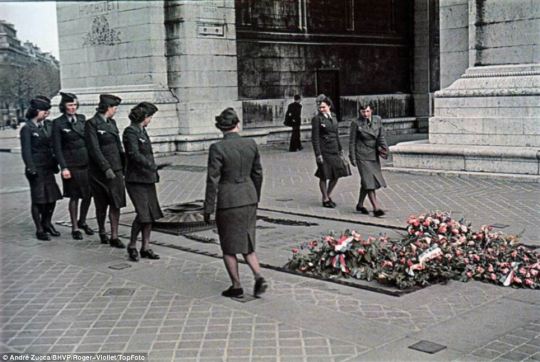
Much of the material in the Journals is introspective, with Jünger addressing his innermost thoughts and dreams. Snakes also appear with some frequency in the Journals, for example, in the entry of 13 July 1943, where during a restless night because of air raid sirens in Paris, he recalls having dreamt of dark black snakes devouring more brightly colored ones. In the Journal entry, he linked snakes back to primal forces incarnating life and death, and good and evil. This connection, he noted, was the reason people fear the sight of a snake, “almost stronger than the sight of sexual organs, with which there is also a connection” (13 July 1943). Following a conversation with the “Doctoresse,” the name that Jünger used for Sophie Ravoux, with whom he was intimate and had an affair in Paris, he described his own manner of thinking as “atomistically by osmosis and filtration of the smallest particles of thoughts.” His thought process, he explained, ran not according to principles of cause and effect but rather at the “level” of the vowels of a sentence, on the molecular level; “This explains why I know people who couldn’t help becoming my friends, even through dreams” (22 January 1944). Addressing Eros and sexual organs, Jünger added that he wished to study the connections between language and physique. Colours also had spiritual values, “Just as green and red are part of white, higher entities are polarised in intellectual couples—as is the universe into blue and red”.
Jünger’s position as an army captain gave him a panorama of the war that left no room for heroes. Violence became a grim leveller that made ideologies interchangeable. Germans on the eastern front were reading On the Marble Cliffs as a condemnation of Soviet Russia rather than of Nazi Germany. Hitler had unleashed a dehumanising force on the world, one that made Russians, Germans, the French Resistance and Allied pilots all look the same, locked in an escalating cycle of cruelty. Jünger witnessed Allied planes strafing screaming children in the streets, releasing bombs timed to explode while presents were handed out on Christmas Eve. Accounts drifted in of Parisian friends, who had once tried to transcend national boundaries with him through measured discussion in the salons, being harassed as collaborators. His summary of this second war could have been a reverse of the first: ‘Inactivity brings men together, whereas battle separates them.’

The picture of Jünger’s political views that emerges in his Journals, however, is a highly chivalric and military elitist one in which a small number of bold idealists, for lack of a better term, struggle against demos and technocracy, democracy and technicians, who are destroying the soul of an older European society. Writing while back home in Kirchhorst on 6 November 1944, following the expulsion of the Germans from France and walking around viewing the destruction wrought by the Allied bombs in Germany, he observed: “As I walked, I thought about the cursory style of contemporary thinkers, the way they pronounce judgment on ideas and symbols that people have been working on and creating for millennia. In so doing they are unaware of their own place in the universe, and of that little bit of destructive work allocated to them by the world spirit.”
He went on to criticise “the old liberals, Dadaists, and free-thinkers, as they begin to moralise at the end of a life devoted to the destruction of the old guard and the undermining of order.” Jünger then referred to Dostoevsky’s novel The Demons, in which the sons of Stepan Trofimovich “are encouraged to scorn anything that had formerly been considered fundamental.” Having destroyed their father, these “young conservatives,” now sensing “the new elemental power” of “the demos,” are then dragged to their deaths. In the ensuing chaos, “only the nihilist retains his fearsome power.” Jünger mentions Hindenburg, and the destruction of the conservatives by the Nazis is clearly implied (6 November 1944).
In August 1943, he described his political views as a combination of Guelph (relating to the medieval supporters of the Pope against the Holy Roman Emperor), Prussian, Gross-Deutscher (in support of a Greater Germany including Austria), European, and citizen of the world “all at once.” As he put it, “My political core is like a clock with cog wheels that work against each other.” However, he added: “Yet, when I look at the face of the clock, I could imagine a noon when all these identities coincide” (1 August 1943).

While violence raged all around, Jünger continued his secret diary, for publication after the war. This ended for him when American tanks rumbled through his village in April 1945, Jünger proclaiming that the deeper the fall, the greater the ensuing rise. Jünger survived investigation in the immediate postwar period and went on to become a grand old man of German literature, with a considerable following at home and abroad. A year before his death he was – as the phrase goes – received into the Catholic church. Having lived through a violent century he expired in his bed in his 103rd year.
The war journals is a highly nuanced, albeit self-made, picture of a human being in the middle of World War II, who is a flirtatious fascist, yet who apparently seems to care for other human beings, regardless of their so-called social strata or race. Take for example this entry dated Paris, 28 July 1942, “The unfortunate pharmacist on the corner: his wife has been deported. Such benign individuals would not think of defending themselves, except with reasons. Even when they kill themselves, they are not choosing the lot of the free who have retreated into their last bastions, rather they seek the night as frightened children seek their mothers. It is appalling how blind even young people have become to the sufferings of the vulnerable; they have simply lost any feeling for it. They have become too weak for the chivalrous life. They have even lost the simple decency that prevents us from injuring the weak. The opposite is true: they take pride in it.”
Having said that, I found some of the contents repugnant as Jünger, a devout entomologist, easily writes about finding a new insect while fires are burning all around Paris in 1943. Indeed Jünger paints himself as the detached botanist-scholar, determined to survive and help the world recover in peacetime. For him, the best way to avoid being sucked into the vortex of violence was to disconnect from emotion and group mentalities: to feel nothing and be on no one’s side, only bearing witness. A detached eye in the storm.

His journal is a hedonistic carousel, as he frequented theatres, literary salons and Left bank bookstalls along the Seine, as well as having a meeting of artistic minds with Picasso, Braque and Cocteau. It’s possible to make your way through this collection and have a grand ole time, enjoying the moments when Jünger encounters celebrities like Picasso, or when Monet’s daughter-in-law gives him the key to the gardens at Giverny for his own private tour, or when he describes another gourmet meal with the well-heeled of Parisian society: “The salad was served on silver, the ice cream on a heavy gold service that had belonged to Sarah Bernhardt.” Jünger relishes his name-dropping and his contacts with the upper crust. He sees himself as one of the Übermenschen: “In this country the superior man lives like Odysseus, taunted by worthless usurpers in his own palace.”
The author himself gets lost in the fog of mystic self regard as all artistic writers are prone to do and confesses that in an entry labeled 26 Aug 1942: “At times I have difficulty distinguishing between my conscious and unconscious existence. I mean between that part of my life that has been knit together by dreams and the other.”
To read the diary in chronological order is to realise that Jünger’s submersion in art and literature was his way of preserving his humanity while serving the machinery of a lethally violent state. One way of doing this was through a voracious program of reading, chiefly literature and history, often reading two or three books at once. One is not surprised at the German and French reading but at the abundance of English writers, whom he read in the original—Melville, Joyce, Poe, Conrad, Kipling, Thomas Wolfe, Thornton Wilder, the Brontës, ad infinitum. The range is also remarkable. Jünger pivots from the 1772 fantasy Diable amoureux to a biography of the painter Turner to Crime and Punishment. And throughout the entire diary, one finds him reading the Bible, cover to cover, which he began shortly after his posting to Paris.

Over and over again I had to remind myself this is a diary. Diaries by definition have one eye on self serving posterity.
So it’s not surprising that Jünger would tweak reality to create this image of poetic detachment. With his constant stories of indulgence in Paris, the reader might assume he had no job while he was there. In fact he was censoring letters and newspapers, a cog in the Nazi machine he so despised. He omits anything that would make him appear a villain. An ongoing extramarital affair in Paris is barely hinted at. But neither does he try to look a hero, omitting how he passed on to Jews information of upcoming deportations, buying them time to escape.
Should he have continued to enjoy his life as a flâneur for so long? He had solid proof of what was going on, debriefed as he was on the mass shootings and death camps on the eastern front. Throughout his career he had railed against inertia, lauding men of action who sacrificed themselves for a just cause. And then such a cause presented itself. Jünger’s colleagues in Paris were involved in the Stauffenberg plot of 1944, and asked for his help. He was one of the most influential conservative voices in Germany at the time, one of the few that Hitler’s followers might have taken seriously. Yet he refused to commit himself during the chaos. Instead, Jünger waited for evil to destroy itself: a fireman who fought the blaze by waiting for the building to burn down. As usual, he inhabited a grey area.

Jünger remains a problematic figure of controversy, perhaps even emblematic of the aged old question how does one respond to brutish evil? There are no easy answers. Addressing the French who collaborated with Germany during the war Robert Paxton, a well regarded historian of Vichy France wrote, “Even Frenchmen of the best intentions, faced with the harsh alternative of doing one’s job, whose risks were moral and abstract, or practicing civil disobedience, whose risks were material and immediate, went on doing the job. The same may be said of the German occupiers. Many of them were “good Germans,” men of cultivation, confident that their country’s success outweighed a few moral blemishes, dutifully fulfilling some minor blameless function in a regime whose cumulative effect was brutish.”
Was Jünger one of those they called a ‘good German’? Eating sole and duck at the famous Tour d’Argent restaurant, while gazing down at the hungry civilians in the buildings below was the choice Jünger made. In his 4 Just 1942 diary entry he wrote, “upon the grey sea of roofs at their feet, beneath which the starving eke out their living. In times like this - eating well and much - brings a feeling of power”.
We are always told to speak truth to power. Before we can speak one must think. But thinking truth to power is never enough in itself unless one acts out truth to power. Words without action is nothing. So the question one has to ask even as one reads from the detached safety of distance and time: how would one act in his shoes or indeed a Frenchman’s shoes?
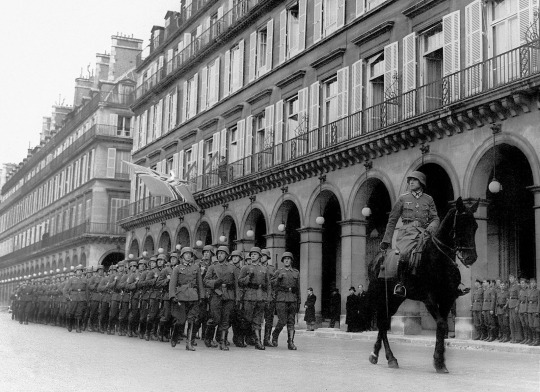
More than anything, the diary raises, for me at least, the question of moral culpability. It’s impossible to tell what Jünger was really thinking, and so perhaps one tantalising aspect of these war journals is psychological more than anything else. All this stuff is swirling around his life but we hear about the harmless social fluff for the most part. For example, he notes “In Charleville, I was a witness at a military tribunal. I used the opportunity to buy books, like novels by Gide and various works by Rimbaud.” I wanted to hear about the tribunal, but alas, it vanished into Jünger’s damn book buying.
And yet if you judge Jünger by his diary entries alone then it would be very easy to find him guilty. But diaries conceal as much as they reveal. For all the criticism that Jünger has served up a self-serving exculpatory diary, the truth is that he leaves his most selfless acts unmentioned. It is known that he gave advance warning to Jews facing deportation: The writer Joseph Breitbach was one, as he subsequently confirmed, and Walter Benjamin was possibly another.
None of this, for obvious reason, could be committed to paper, nor could the names of Adolf Hitler or any of his henchmen. Instead, their appearances are marked by Jünger’s felicitous code names. Joseph Goebbels, the Nazi chief propagandist, is “Grandgoschier,” a character from Rabelais’s Gargantua and Pantagruel meaning “Big Throat.” SS Chief Heinrich Himmler is “Schinderhannes,” the name of a notorious German highwayman but also a pun on horse knacker. And Hermann Goering is simply “Head Forester,” citing the most fatuous of his many official titles.
Jünger thought a great deal about the mystic and symbolic power of sounds, and he reserved his most apposite pseudonym for Hitler, “Kniébolo,” a name that is at once menacing and absurd. It suggests a kneeling demon (Diabolos), a leitmotif of the diary as Jünger became ever more convinced of Hitler’s essentially Satanic character- in the literal biblical sense.

So grey areas get more grey when we either try to step back and be detached to render a verdict on Jünger or if we step into his shoes to get inside his head. This is the limitation of a secret and coded diary, no matter how scrupulously written and how fascinating they are to read. Diaries are written for oneself or an imagined other; they play on the satisfactions of monologue. Letters are shaped by the contingencies of distance and time between writer and recipient; they become over time scattered in various places and must be "collected" to form a single body of writing.
Diaries are shaped by moments of inspiration but also by habit; they are woven together by a single voice and usually are contained between covers. Diarists play with the tension between concealing and revealing, between "telling all" and speaking obliquely or keeping silent. Like letter writing, diarists inscribe the risks and pleasures of expression and trust. The diary is an uncertain genre uneasily balanced between literary and historic writing. The diary belongs to the woman where history and literature overlap. So it’s easy to conclude that we will always have ambiguity and tension between these two polar opposites.
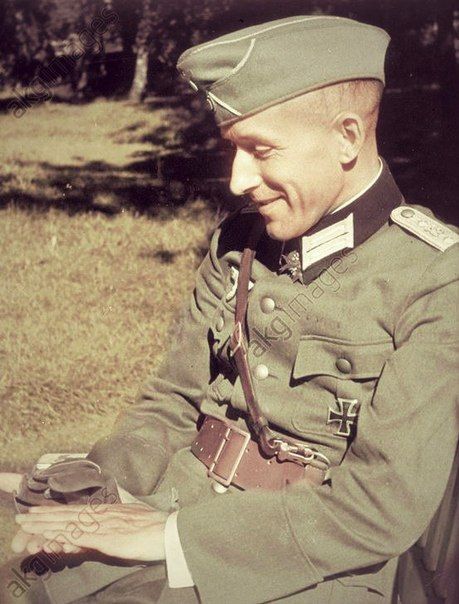
After 1945, Jünger again withdrew into private life, but continued to publish. Seclusion encouraged attention. His reputation grew. Scholarly editions appeared. In three last decades, doubters aside, he enjoyed growing recognition, travelled the world, deepened his knowledge of nature and voiced concern about human damage to the planet. Jünger poured out books late into his nineties. By then he had swept Germany’s top literary prizes and been visited in his Swabian retreat by the statesmen of Europe, including Helmut Kohl and François Mitterrand.
Jünger’s experience of life did little to dent his loathing of liberalism and democracy. On a country walk along a bomb-pitted road near his home late in 1944, Jünger indulges a moment of conservative relish, telling himself that it is liberals who are to blame for all that has befallen. How wonderful it is, he writes sarcastically, “to watch the drama of the old liberals, Dadaists and freethinkers, as they begin to moralise at the end of a life devoted completely to the destruction of the old guard and the undermining of order”. “Blame the liberals!” was the reactionary’s charge at birth (there is a profound difference between true conservatism and the extreme reactionary). It hobbled the Weimar Republic and bedevils politics today. Politically, he had learnt nothing. Today Western Europe society is eating itself inwards through the corrosive influence of the woke-ness of cultural Marxism and the conservative now finds himself/herself in the sweetly ironic position of defending the tenets of true liberalism.
For English-speaking readers who do not know his work, A German Officer in Occupied Paris shows the many sides of this complex, elusive writer. These diaries are invaluable about the man and his times. Jünger is nowadays probably less read than read about. So these war journals are to be welcomed and to be read with great interest.

For some these journal entries alone will still provide material to debate the moral choices made - and evaded - by Jünger. To critics, Jünger participated too much and judged too little. To defenders, he was indeed on the hard right, but no fascist and, besides, his prose was what mattered, not his politics. Not to pity Jünger’s personal travails would be defective. Not to respond to his prose would be deaf. But all of us can ponder Jean Cocteau’s final verdict, who liked Jünger and considered him a friend but whose aloofness troubled him: “Some people had dirty hands, some had clean hands, but Jünger had no hands.” Jünger may have washed his hands of his time in Paris but the hand of history forever tapping on his shoulder is less forgiving.
#treat your s(h)elf#books#review#reading#ernst junger#world war two#war#paris#france#history#germany#nazi germany#resistance#cocteau#collaboration#diaries#journals#culture#society#occupation
68 notes
·
View notes